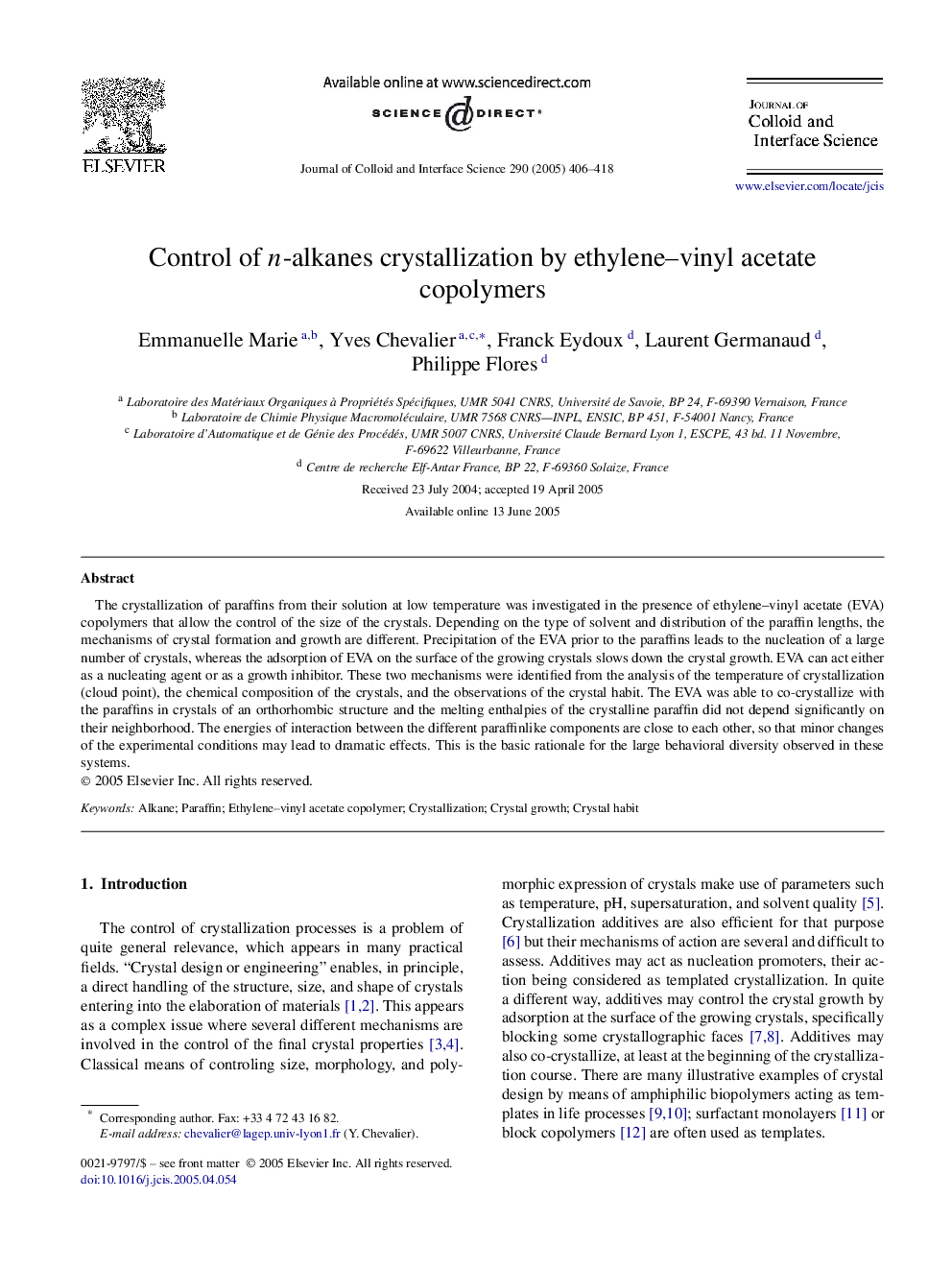| Article ID | Journal | Published Year | Pages | File Type |
|---|---|---|---|---|
| 9678998 | Journal of Colloid and Interface Science | 2005 | 13 Pages |
Abstract
The crystallization of paraffins from their solution at low temperature was investigated in the presence of ethylene-vinyl acetate (EVA) copolymers that allow the control of the size of the crystals. Depending on the type of solvent and distribution of the paraffin lengths, the mechanisms of crystal formation and growth are different. Precipitation of the EVA prior to the paraffins leads to the nucleation of a large number of crystals, whereas the adsorption of EVA on the surface of the growing crystals slows down the crystal growth. EVA can act either as a nucleating agent or as a growth inhibitor. These two mechanisms were identified from the analysis of the temperature of crystallization (cloud point), the chemical composition of the crystals, and the observations of the crystal habit. The EVA was able to co-crystallize with the paraffins in crystals of an orthorhombic structure and the melting enthalpies of the crystalline paraffin did not depend significantly on their neighborhood. The energies of interaction between the different paraffinlike components are close to each other, so that minor changes of the experimental conditions may lead to dramatic effects. This is the basic rationale for the large behavioral diversity observed in these systems.
Related Topics
Physical Sciences and Engineering
Chemical Engineering
Colloid and Surface Chemistry
Authors
Emmanuelle Marie, Yves Chevalier, Franck Eydoux, Laurent Germanaud, Philippe Flores,
